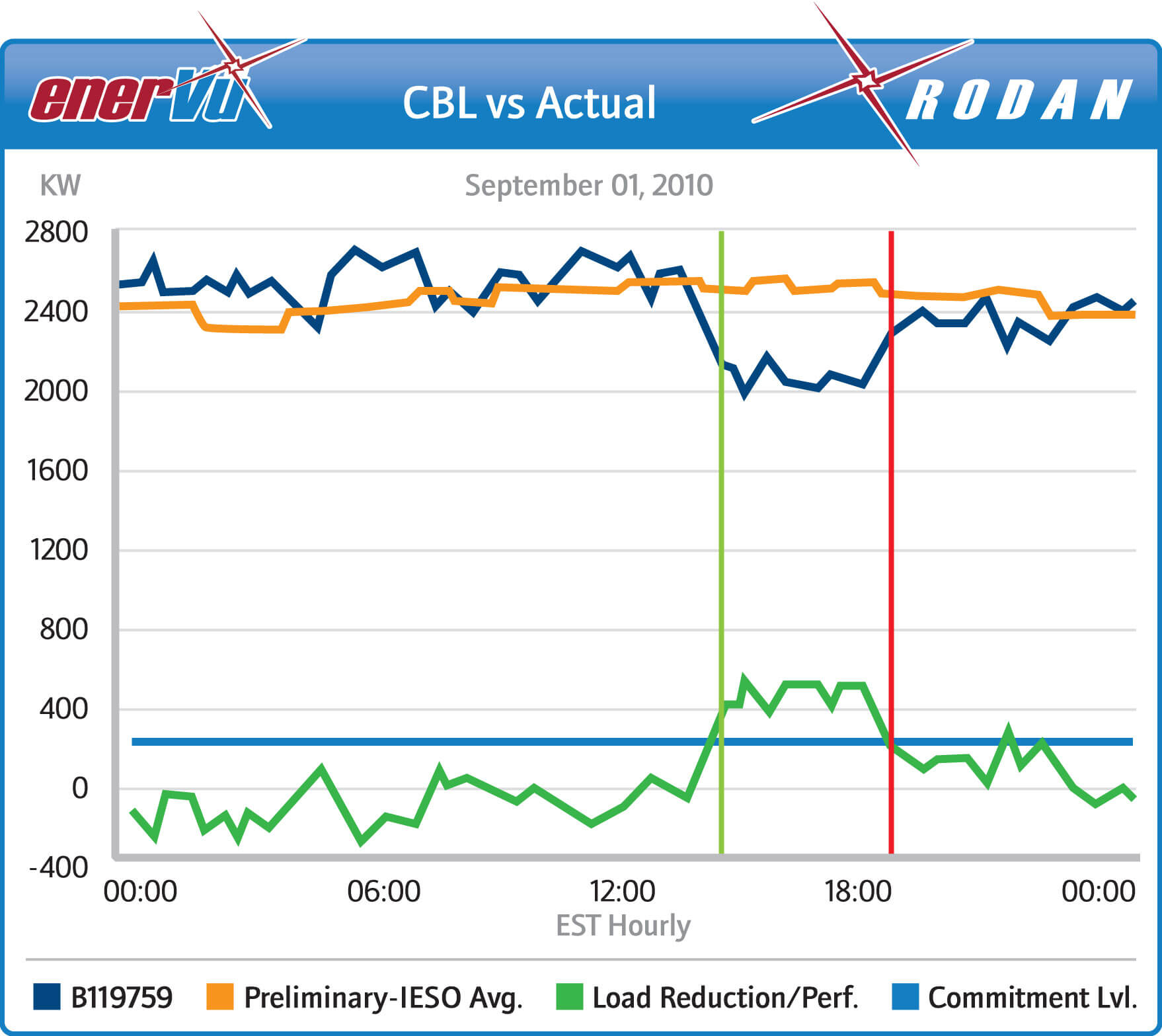Many municipalities have yet to take advantage of Demand Response, which is one of the most profitable forms of energy efficiency. Since 2008, Ontario has been the only province in Canada that offers contractual Demand Response (DR) programs that pay energy consumers to conserve electricity. Facilities like office buildings, ice rinks, water treatment plants, and community housing buildings are excellent DR candidates that can raise capital for municipal sustainability projects. This short guide will answer some frequently asked questions and concerns about Demand Response.
How DR Works in Ontario
Demand Response programs compensate energy consumers when they reduce their electricity consumption during peak usage times. Participants are paid for shedding or shifting an agreed upon load, which can mean reducing the temperature in office buildings or turning off non-essential equipment like fountains and extra elevators.
In December 2015, DR is moving towards an auction-based market, meaning that DR capacity will be procured through a cost-competitive, annual auction delivered on the Independent Electricity System Operator (IESO) energy market. An aggregator can assist municipalities monitor and manage bids in the auction.
How DR Benefits Municipalities
DR is beneficial for several reasons. Most significant is that the revenue stream from Demand Response can be used to invest in special sustainability projects like refurbishments and high efficiency upgrades. These initatives are not just financially rewarding, but also help create community buy-in for conservation and environmental stewardship.
But another important aspect of Demand Response is its ability to procure energy capacity without new infrastructure. If you work for a municipality, you’re probably well acquainted with “NIMBY” – Not In My Backyard. The building of power plants, solar or wind farms, or other energy infrastructure faces enormous public opposition in many Ontario communities. As a “virtual power plant,” demand-side resources helps reduce stress on the grid without any new construction. A step towards greater energy conservation now can reduce the need for extensive debates on new power plants later.
Customer Service
An ongoing concern for municipalities is customer service. Will someone complain it’s too hot at their desk when cooling goes down temporarily? Will someone complain using about softer ice surfaces once cooling is lowered?
Depending on the curtailment strategy, conserving energy as part of a Demand Response program doesn’t have to be invasive or disruptive. However, in my experience, communicating to residents and employees that temporary measures are being taken to reduce stress on the electrical grid goes a long way. Sending out messages via social media streams can help with communication efforts, and often they are met with positive support. Stressing that participation helps the environment, but also brings in new revenue for upgrading city facilities is a tried and true communication strategy.
High Profile Buildings and Large Power Users
One mistake many municipalities make is putting high profile buildings at the top of their list for enrollment in DR programs. In most cases, the problem with this is that higher profile buildings are usually first to be retrofitted to achieve permanent ongoing energy savings. In these cases, temporary reductions via DR deliver little load reduction and therefore insignificant revenue generation.
Should the municipality still want to target higher profile buildings, a different strategy may be required: municipalities may want to enroll higher profile buildings as a communications initiative, rather than for substantial revenue generation. A highly visible, widely communicated message can demonstrate to the public that you’re taking steps towards better energy conservation. For instance, your department can let the community know that reduction is happening on a hot summer day that has high electricity demand. In many markets, money can be saved based on hourly energy prices being higher on these high demand days. This could be a great opportunity for raising awareness of energy conservation and electricity prices, and of raising the profile of your sustainability initiatives.
A less visible, but more financially rewarding strategy is enrolling larger power users, such as ice rinks and water treatment plants. Investing in cleaning up back-up generators can demonstrate sustainability by reducing harmful emissions and sending a message to municipal residents that elected council are taking steps to ensure energy efficiency, positioning the municipality as a leader in energy conservation. Using these generators in four-hour periods can actually help municipalities guarantee the generators will be available and working in the event of a real power outage.
Finally, if DR still seems unachievable, then investigation and investment in controls technology may be what is needed to make it work. There are often low-cost systems that can operate outside a building automation system to enable DR, and can also help reduce overall energy costs. For example, there are systems that can run five-ton roof top air handling units for $8-10K – all costs included. This can easily be funded by DR revenue.
Demonstrating Municipal Commitment
Involvement of key operational staff always plays an integral role in DR program success. However, success can also driven from the top down, from a CEO or council. A message coming from a higher level can more effectively demonstrate commitment to a program such as DR and effectively messages the initiatives the city is taking.
Cities looking to get involved with DR should contact their local utility for a recommendation on an aggregator. Utilities are in a good position to recommend the aggregator that best suits the municipality’s needs.
 William Grove, Director, Business Development
William Grove, Director, Business Development
In his role as Director, Business Development, Willie Grove is responsible for managing Rodan’s offerings to Ontario’s largest and most sophisticated energy users in the Commercial, Industrial, Municipal and Institutional markets. In the Demand Response space he is regularly published and considered one of the most knowledgeable Demand Side Management professionals in the country. He has successfully taken customers of all sizes through the process of understanding demand response, finding opportunities in their organizations and finally successful participation in programs around across North America. In addition he has successfully delivered customized Rodan solutions including metering, data management and monitoring systems, commodity procurement, bill verification and CDM initiatives to his client base.
Prior to joining Rodan, Willie had significant sales and sale management experience in a number of industries including energy procurement, consumer goods and services.
Willie holds a Bachelor of Arts degree from the University of Waterloo.




